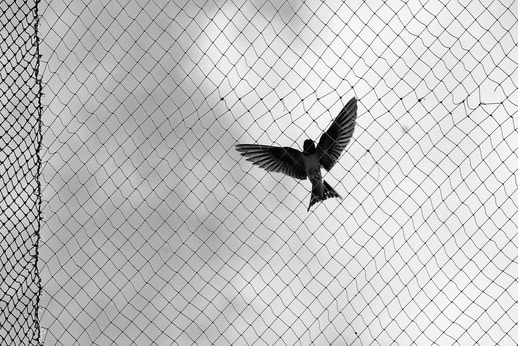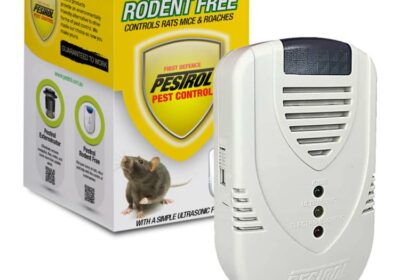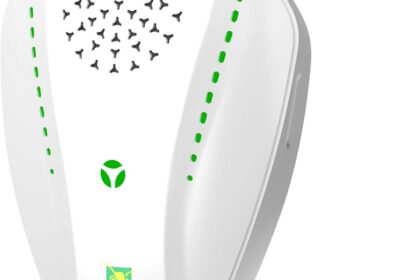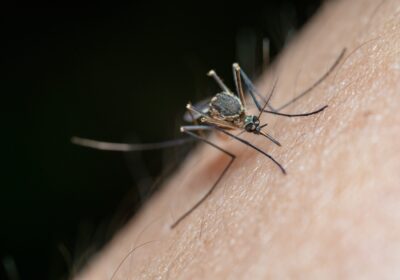The Essential Guide to Bird Netting for Australian Homemakers
Are you tired of watching your beloved garden vegetables and fruits get pecked away by persistent birds? Picture this: you excitedly step outside to check on your ripening produce, only to find it half-eaten and ruined by those cunning feathered intruders. Frustrating, isn’t it?
In our blog, “The Essential Guide to Bird Netting for Australian Homemakers,” we understand the exasperation of dealing with pesky birds wreaking havoc on your garden.

Let’s dive into the comprehensive world of bird netting and discover how this simple yet effective solution can transform your gardening experience.
Here’s a sneak peek of what you can expect to learn:
Choosing the right bird netting material based on your needs
Installation tips and tricks for hassle-free setup
Maintenance guidance to ensure longevity and effectiveness
Understanding the benefits of bird netting beyond just protection
Say goodbye to the days of bird-induced garden disappointment. Join us on this informative journey to reclaim your harvest and enjoy the fruits of your labor without interference.
Understanding Bird Netting
What is Bird Netting?
Bird netting is a versatile and effective solution designed to keep birds away from various areas, such as crops, gardens, and buildings. It serves as an impenetrable barrier that helps protect plants, fruits, and structures from pest birds.
Types of Bird Netting
Heavy Duty Structural Bird Netting: Ideal for large commercial buildings and premises requiring long-lasting protection.
Household Fruit-Tree Netting: Specifically designed for household fruit-tree protection, ensuring a quality product for homeowners.
Benefits of Bird Netting
Bird netting offers several advantages, including:
Pest Bird Exclusion: Prevents pest birds from accessing crops, fruits, and other vulnerable areas.
Quality Protection: Ensures a reliable defense against bird damage, maintaining the integrity of the plants.
Compliance with Regulations: Helps comply with recent regulations regarding bird control in agricultural settings.
Applications of Bird Netting
Bird netting is commonly used for:
Vegetable Gardens: Safeguard your vegetables from bird-related damage.
Fruit Trees: Protect fruit trees from pest birds while allowing air circulation.
Commercial Use: Ideal for commercial orchards, plant rooms, and entrance awnings.
Factors to Consider When Choosing Bird Netting
When selecting bird netting for your needs, consider the following factors:
Mesh Size: Opt for a netting with the appropriate mesh size to prevent bird intrusion.
Durability: Choose heavy-duty options for long-term use, especially in commercial settings.
Warranty: Look for bird netting with a warranty to ensure product quality and longevity.
Types of Bird Netting Materials
When it comes to choosing the right bird netting material for your needs, it’s important to understand the different options available in the market. Here are some common types of bird netting materials you can consider:
Heavy Duty Structural Bird Netting
Ideal for commercial buildings and large premises.
Provides an impenetrable barrier against pest birds.
Comes with a long warranty period for durability.
Versatile Fruit Tree Netting
Specifically designed for household fruit-tree and vegetable garden use.
Protects fruit trees from pest birds while allowing sunlight and rain through.
Premium Anti-Bird Netting
Perfect for commercial use in agricultural settings.
Meets recent regulations for bird control and pest prevention.
It’s important to select the right type of bird netting material based on your specific requirements, whether it’s for household use, commercial buildings, or agricultural purposes. By choosing the appropriate material, you can effectively keep pest birds at bay and protect your crops or property.
“Selecting the right bird netting material is essential for effective bird control and protection of your crops.”
Factors to Consider Before Choosing Bird Netting
When it comes to selecting the right bird netting for your specific needs, there are several important factors to keep in mind. Understanding these considerations will help you make an informed decision and ensure that you choose the most suitable product to protect your property from pest birds.
Purpose and Location:
Before purchasing bird netting, it’s crucial to determine the primary purpose of the netting and where it will be installed. Are you looking to protect a vegetable garden, fruit trees, or a commercial building? Different locations may require specific types of netting based on the level of protection needed.
Type of Netting:
There are various styles of bird netting available in the market, ranging from lightweight options to heavy-duty structural netting. Consider the size of the area to be covered, the type of birds you are targeting, and the durability required for long-term use. For example, heavy-duty bird netting is ideal for large premises or commercial orchards, while lightweight netting may suffice for household fruit trees.
Durability and Warranty:
Check the quality of the bird netting and the warranty offered by the manufacturer. Look for products that come with a warranty period, such as a year UV warranty pro-rata. Ensure that the netting is made from high-quality materials that can withstand outdoor conditions and provide an impenetrable barrier against birds.
Installation and Maintenance:
Consider the ease of installation and maintenance of the bird netting. Some products come with design services or installation guides to help you set up the netting effectively. Additionally, assess the level of maintenance required to keep the netting in good condition, especially in areas with high bird activity.
Compliance with Regulations:
Be aware of any recent regulations regarding the use of bird netting in your area. Ensure that the netting you choose complies with safety standards and regulations to prevent any legal issues in the future.
By carefully evaluating these factors before selecting bird netting, you can ensure that you make the right choice that meets your specific requirements and provides effective protection against pest birds.
The Importance of Proper Installation Techniques
When it comes to bird netting, ensuring the proper installation techniques are followed is crucial to its effectiveness and longevity. Whether you’re using heavy-duty structural bird netting for a commercial building or installing netting for your household vegetable garden, the way it is set up can make a significant difference in its performance. Let’s delve into the key reasons why proper installation is essential:
Ensures an Impenetrable Barrier: Properly installed bird netting forms an impenetrable barrier that effectively keeps pest birds at bay. By securing the netting tightly and using the right fixings, you create a formidable obstacle that prevents birds from accessing your crops or premises.
Prevents Damage to Fruit Trees: For household fruit-tree owners or commercial orchards, correct installation techniques can safeguard fruit trees from pesky birds. The netting acts as a protective shield, preventing birds from feasting on the fruit and causing damage to the harvest.
Provides Long-Lasting Protection: By following manufacturer guidelines and industry best practices during installation, you ensure that the bird netting offers long-lasting protection. This is especially important for large-scale orders or commercial installations where durability and reliability are key.
“Proper installation is the foundation of effective bird netting. It not only protects your crops but also ensures peace of mind knowing your investment is secure.”
How to Identify Areas Requiring Bird Netting
Assessing Your Property
When considering the need for bird netting, it’s essential to conduct a thorough assessment of your property. Begin by identifying key areas that are susceptible to bird intrusions, such as your vegetable garden, fruit trees, or any areas where pests birds tend to gather. By understanding the layout of your property and the potential entry points for birds, you can effectively determine where bird netting would be most beneficial.
Identifying Pest Bird Activity
One of the telltale signs that you require bird netting is observing pest bird activity on your property. Look out for damage to your crops, nesting materials scattered around, or the presence of droppings in and around your premises. These signs indicate that birds have found access to your property and are causing harm. Identifying these areas of activity will help you prioritize where to install bird netting for maximum protection.
Consulting with Experts
If you are unsure about the areas that require bird netting or the type of netting suitable for your specific needs, consider consulting with bird netting experts. Professionals with years of experience in bird control can provide valuable insights into the best solutions for your situation. They can assess your property, recommend the right type of netting, and even offer design services tailored to your requirements.
“Prevention is better than cure when it comes to protecting your crops from pest birds.”
“Investing in quality bird netting is a cost-effective solution to safeguard your harvest from unwanted avian visitors.”
Bird Netting Maintenance and Longevity
Bird netting is an essential investment for protecting your garden and household from pest birds. By following proper maintenance practices, you can ensure the longevity and effectiveness of your bird netting. Here are some valuable tips to keep your bird netting in top condition:
Regular Inspection and Cleaning
Regularly inspect your bird netting for any signs of damage or wear. Check for tears, holes, or loose sections that may allow birds to access your plants. Clean the netting periodically to remove debris, dust, or bird droppings that can degrade its quality.
Proper Installation Techniques
Ensure that your bird netting is properly installed to provide maximum protection. Use high-quality anchors, posts, and fasteners to secure the netting firmly in place. Regularly check the tension of the netting to prevent sagging or gaps that birds could exploit.
UV Protection and Weather Resistance
Choose bird netting that offers UV protection and is designed to withstand harsh weather conditions. UV-resistant netting is essential for maintaining its structural integrity and longevity, especially in the Australian
Compatibility with Other Bird Control Methods
Bird netting is a versatile and effective solution for protecting crops, gardens, and structures from pest birds. When considering bird control methods, it’s important to understand how bird netting can complement other strategies to create a comprehensive and effective approach.
Integrated Pest Management (IPM)
Incorporating bird netting into an IPM approach enhances the overall pest control strategy. By creating a physical barrier, bird netting helps prevent birds from accessing vulnerable areas, reducing the need for chemical deterrents and traps.
Scare Tactics
While scare tactics like noise devices and visual deterrents can be useful in deterring birds temporarily, they may not provide long-term protection. Bird netting acts as a reliable and continuous barrier, offering sustained defense against pest birds.
Repellents and Taste Aversions
Some repellents and taste aversions can be effective in deterring birds from specific areas. When used in conjunction with bird netting, these products can reinforce the protection provided by the netting, offering a multi-layered defense against pest birds.
Ultrasonic Devices
Ultrasonic devices emit sound frequencies that are uncomfortable for birds, encouraging them to leave an area. While these devices can be part of an integrated bird control system, they are more effective when combined with physical barriers like bird netting to prevent birds from returning.
Physical Deterrents
Physical deterrents such as spikes and wires can prevent birds from landing and roosting on structures. When used alongside bird netting, these deterrents reinforce the protection of vulnerable areas, making it harder for birds to find access points.
Professional Consultation
For large-scale or complex bird control needs, seeking advice from professionals in the field can help determine the most effective combination of methods. Incorporating bird netting into the overall bird control strategy can provide a reliable and long-lasting solution.
“By combining bird netting with other bird control methods, homeowners and commercial growers can create a comprehensive approach to protecting their crops, gardens, and structures from pest birds.“
Regulations and Permits for Bird Netting Installation
When it comes to installing bird netting, it’s crucial to understand the regulations and permits that may be required, especially in commercial or large-scale settings. By ensuring compliance with relevant guidelines, you can effectively protect your premises from pest birds while avoiding any potential legal issues. Here’s what you need to know:
Local Regulations: Before initiating any bird netting installation, check with your local authorities regarding specific regulations that apply to your area. Some regions may have restrictions on the type of netting or installation methods allowed.
Permit Requirements: Certain locations might necessitate obtaining permits for bird netting installations, particularly for commercial buildings or large premises. Be proactive in acquiring the necessary permits to prevent delays or fines.
Environmental Considerations: In some cases, environmental regulations may influence the installation of bird netting, especially if the netting could impact local wildlife or habitats. Ensure your netting choice aligns with eco-friendly practices.
Industry Standards: Familiarize yourself with industry standards for bird netting installation to guarantee the efficacy and safety of the netting system. Adhering to these standards can help optimize the performance of the netting in deterring pest birds.
Professional Expertise: When in doubt, consult with experts in bird netting installation who are well-versed in regulations and best practices. They can offer guidance on compliance requirements and ensure a successful installation process.
Remember, staying informed about regulations and permits for bird netting installation is essential to not only protect your property from pest birds but also to maintain a level of compliance that upholds the integrity of your bird control efforts.
Cost Analysis of Bird Netting Solutions
When considering bird netting solutions, the cost factor plays a crucial role in decision-making. Let’s delve into the cost analysis of various bird netting options to help you make an informed choice.
Heavy Duty Structural Bird Netting:
This high-quality bird netting option is ideal for commercial buildings and large premises. Its durability and impenetrable barrier make it a long-lasting solution. While it may come with a higher upfront cost, the peace of mind it offers is invaluable.
Lightweight Bird Netting:
For household fruit-tree protection or smaller-scale applications, lightweight bird netting offers a cost-effective solution. With a year UV warranty pro-rata, it provides an affordable yet reliable option to safeguard your plants from pest birds.
Quality Product Considerations:
When evaluating the cost of bird netting solutions, it’s essential to factor in the quality of the product. Opting for anti-bird netting with a reputable brand that offers a warranty can ensure long-term effectiveness and value for money.
Additional Services:
Some suppliers offer design services for custom bird netting solutions tailored to your specific needs. While this may incur extra costs, the benefits of a tailored solution can outweigh the initial investment, especially for large-scale orders.
Quote:
“Choosing the right bird netting solution is an investment in protecting your crops and property from pest birds.”
In closing…
In closing, bird netting is a crucial solution for Australian homemakers looking to protect their gardens and crops from pesky feathered visitors. By understanding the different types of bird netting available, you can make an informed decision on which one best suits your needs. Remember to consider factors such as mesh size, material durability, and the size of the area you need to cover. Ensuring your garden is safeguarded with high-quality bird netting will not only protect your crops but also maintain a harmonious balance with nature. Don’t let birds ruin your hard work – invest in effective bird netting today and enjoy the fruits of your labor in peace. For a wide selection of premium bird netting options tailored to Australian conditions,










